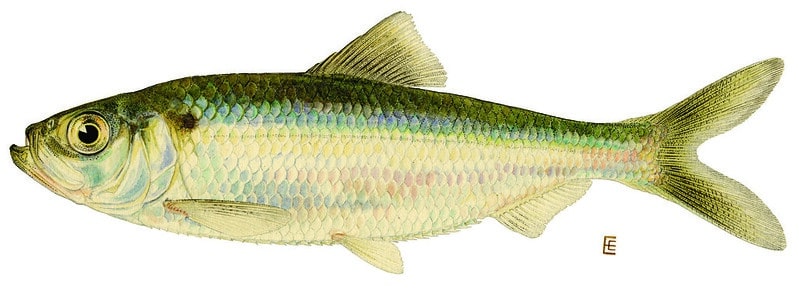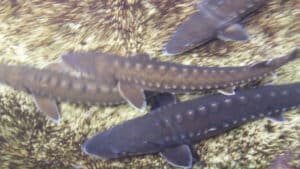
Many species of fish travel great distances during their lives, and many move between the ocean and freshwater streams and rivers in order to complete their lifecycles. Unfortunately, dams built on those streams and rivers are like locked doors keeping fish from their required habitat. For centuries in Maine, species such as the endangered Atlantic salmon, American shad, blueback herring, alewife, sea lamprey, and American eel have been blocked by dams from reaching the freshwater streams they need to live, grow, and reproduce.
There is a growing movement in the United States to remove old or unnecessary dams to restore fish passage, a movement which began, in part, on the Kennebec River. The removal of the Edwards Dam in Augusta in 1999 not only helped restore habitat along the Kennebec, but “marked a significant milestone in the river restoration and dam removal movement in America,” according to American Rivers.
The work of restoring the Kennebec is not done, though, and recently received a boost from the state’s Department of Marine Resources (MDMR), which has recommended removing four downstream dams as part of its Kennebec River Management Plan Diadromous Resources Amendment. Maine Audubon strongly supports MDMR’s conclusions and urges the removal of these dams to restore native fish habitat.
MDMR’s conclusion is that the best approach to meet its management goals for the Kennebec River is to decommission and remove some or all of the dams in the Lower Kennebec. Specifically, MDMR recommends removal of the Shawmut and Lockwood dams and the consideration of decommissioning the Hydro Kennebec and Weston projects, as these four main-stem dams constitute the single largest impact on historical habitat in the Kennebec River.

Maine Audubon Conservation Biologist Sarah Haggerty has reviewed the amendment and believes it to be a thoughtful and rigorous review of the status and condition of the populations of diadromous fish in the Kennebec River and its tributaries. Because MDMR’s policy is to restore Maine’s native diadromous fish to their historical habitat, the amendment focuses primarily on the regions of the Kennebec River basin that were inhabited by these fishes before the construction of dams. The impacts of those dams is documented and recommendations are provided for restoration and management of diadromous fish in the Kennebec River watershed.
Dams and road crossings are the greatest barriers to movement of aquatic organisms across Maine’s landscape. Multiple dams within a system create cumulative impacts that often cannot be overcome. While fishways and other mitigation measures may provide some small benefit individually, the cumulative impacts of multiple dams in a system cancel out any small benefit provided at each individual fishway. Currently, the MDMR must undertake such extraordinary measures as to “trap and truck” migrating Atlantic salmon around the offending dams, and to raise and stock young salmon and salmon eggs in the parts of the river system that adults can’t access for natural spawning due to the dams.
Dams don’t simply block access to habitat–they also dramatically alter the habitat itself and the natural function of a stream or river system. Dams change water temperature, sediment and nutrient transport, and species compositions. Fish that are able to navigate through fishways often experience higher temperatures, migration delays, and mortality moving upstream and downstream through the dam. Diadromous fish species require safe, timely, and effective access to high quality habitats at different life stages in order to successfully survive and reproduce. Dams prevent such access. Particularly in the face of a changing climate, we need to ensure the Atlantic salmon and other cold-water fish have access to a variety of habitat types to maximize life history diversity and population persistence.

Sarah Haggerty coordinates Maine Audubon’s Stream Smart program, which aims to improve road/stream crossings to restore aquatic habitats and protect roads and public safety. These efforts to restore access to aquatic habitats are hampered by the presence of dams. By removing these dams on the Kennebec River, some of the best Atlantic salmon habitat in the state, found in the Sandy River, will once again be accessible and productive, making the Stream Smart crossings there fully functional for this species and others.
Maine Audubon applauds the Department’s recommendations and encourages them to actively pursue fully restoring a free-flowing Kennebec River through the removal of all four main-stem dams. The removal of the Edwards Dam in 1999 was a great first step, and diadromous fish and other species responded quickly and positively. Imagine what could happen if the whole river were free.
